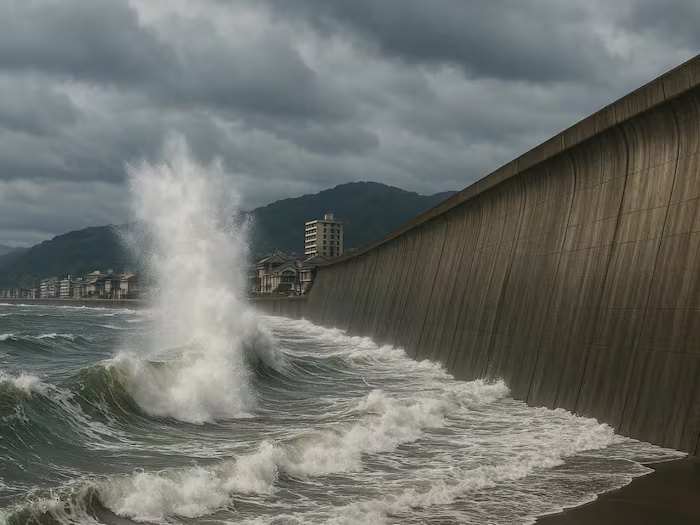Tokyo, August 2025 — Natural disasters often strike without warning, leaving behind devastation and heartbreak. But few nations have responded to such calamity with the resilience and innovation that Japan has shown. Following the catastrophic 9.1 magnitude earthquake on March 11, 2011, and the towering 30-meter tsunami waves that followed, Japan embarked on a historic mission to protect its coastal communities from future threats.
🌊 A Nation Rebuilt on Resolve
The 2011 disaster claimed thousands of lives and displaced millions. In its aftermath, Japan made a bold decision: to construct a massive sea wall along its vulnerable eastern coastline. This engineering marvel stretches 400 kilometers and stands up to 15 meters tall, designed in a curved shape to deflect tsunami waves before they reach inland cities.
🛡️ Engineering Against Nature
- The wall’s height and strength vary based on local geography and past tsunami impact zones.
- Advanced sensors, alarm systems, and reinforced concrete have been integrated to enhance durability and early warning capabilities.
- In addition to the wall, Japan is developing Tsunami Control Parks featuring trees and breakwaters to absorb wave pressure and reduce environmental impact.
🌱 Eco-Friendly and Adaptive Design
Japan’s approach isn’t just about concrete. The country is also investing in coastal forests and green spaces to maintain ecological balance. Each new disaster prompts upgrades in materials and strategy, ensuring that the system evolves with time.
⏳ Buying Time, Saving Lives
While no wall can guarantee complete protection from nature’s fury, Japan’s sea wall offers something invaluable: time. Even against massive waves, the barrier can delay impact long enough for residents to evacuate to safety. This buffer could mean the difference between life and death.
🌍 A Model for the World
Japan’s initiative has inspired other coastal nations to rethink their disaster management strategies. From India to Indonesia, governments are studying Japan’s model to strengthen their own defenses.
🧭 Conclusion
Japan’s sea wall is more than a physical structure—it’s a symbol of resilience, foresight, and hope. In a world increasingly vulnerable to climate-driven disasters, it stands as a testament to what human ingenuity can achieve when driven by memory and the will to protect.


